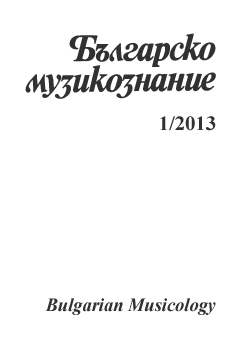Румяна Каракостова: „Идеята Държавен музикален театър и проекцията ѝ в националния репертоар до края на ХХ век”
Rumyana Karakostova: “The State Musical Theater Idea and Its Projection onto the National Repertoire up to the End of the 20th Century”
Author(s): Claire LevySubject(s): Music
Published by: Институт за изследване на изкуствата, Българска академия на науките
Summary/Abstract: Devoted to the history of the State Musical Theater, founded in 1948, the monograph of Rumyana Karakostova traces political, ideological and aesthetical changes and developments in a particular sphere of musical stage art observed during the second half of the 20th century – a period which inevitably raises issues concerning aspects in relation to the totalitarian cultural politics in Bulgaria. Far from the idea to describe the processes in any simplistic terms, discussion here introduces the dynamics of two main critical perspectives. On one hand, the musical theater is seen as a state cultural institution which imposes particular normative ideological and aesthetical canons. On the other hand, the musical theater is explored as a creative scene for popular art which – even under the pressure of specific ideological dictate – played a vital role in Bulgarian musical culture and stimulated the uneven paths in standing up for artistic independence. Employing the advantages of a close-up professional knowledge, special attention is paid to the development of individual styles and general genre models which creatively avoided or diverted imposed aesthetical canons. The account here includes analyses of emblematic works, created by Parashkev Hadjiev, Georgi Zlatev-Cherkin, Assen Karastoyanov, Viktor Raychev, Dimitar Valchev, Petar Stupel, Jules Levi, Lubomir Denev – composers whose names were closely associated with the State Musical Theater stage repertoire. It must be pointed out that the new book of Rumyana Karakostova follows long-standing scholarly interests realized also in her previous monograph on the operetta in Bulgaria between the two world wars. In this sense, the author catches aspects of continuity/discontinuity concerning some general processes in Bulgarian musical theater, observed in the context of two different historical periods. No doubt, the insightful reading of a rich panorama of artifacts and aesthetical phenomena brings accents of a valuable contribution to the scholarship in musical history – a contribution which must be admired for both the range of the raised issues and its analytical profile.
Journal: Българско музикознание
- Issue Year: 2013
- Issue No: 1
- Page Range: 78-80
- Page Count: 3
- Language: Bulgarian
- Content File-PDF

